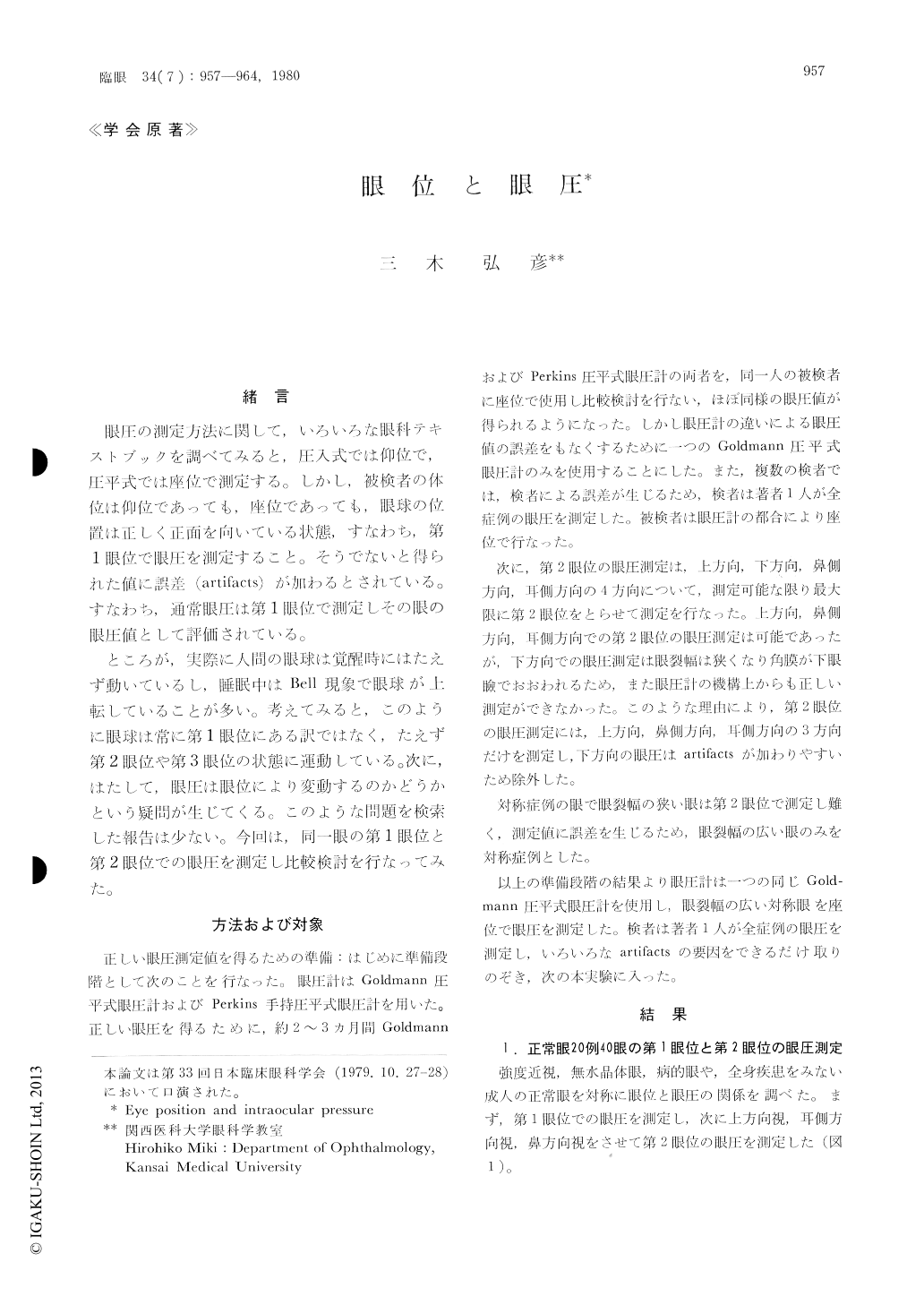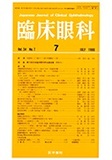Japanese
English
- 有料閲覧
- Abstract 文献概要
- 1ページ目 Look Inside
眼位は第1眼位で測定し,その眼の眼圧値として評価される。しかし,実際は人間の眼球は覚醒時にはたえず動いているし,睡眠中は上転していることが多い。
今回は第1眼位の眼圧と上方視,鼻方視,耳方視の第2眼位の眼圧を測定しその変化を調べたところ,次の結果を得た。
1)正常人眼20例40眼の第2眼位で眼圧値は第1眼位の眼圧と同じ値か,第1眼位の眼圧より2mmHg以内の上昇を示した。正常人眼では,(第1眼位の眼圧値)+(0〜+2mmHg)=(第2眼位の眼圧値)の式が成立する(図2)。
2)第1眼位の眼圧より第2眼位の眼圧が4mmHg以上の異常上昇を呈した疾患には,内分泌性眼球突出眼,眼窩壁骨折,頸動脈海綿動脈洞瘻,眼窩炎性偽腫瘍,眼筋麻痺などに認めた(表2)。
3)緑内障眼では,24例46眼中10例20眼(約42%)に第1眼位の眼圧より第2眼位の眼圧が4mmHgの上昇,または眼圧が21mmHg以上の高眼圧値を示した。
第1眼位の眼圧が正常範囲内の変化で第2眼位の眼圧が21mmHg以上の高眼圧値を呈する緑内障が存在することが判明した。治療にはこの第2眼位の眼圧を20mmHg以下にコントロールすることで緑内障の進行を停止できた。低眼圧緑内障と診断されているものの中にこのようなタイプの緑内障がみられた。
It is mandatory that tonometry be performed with the eye in the primary position regardless whe-ther the patient is in the supine or sitting position. In actual practice, though, an eye is rotating in all directions while awake and is turned upward while asleep. A question is raised whether the intraocular pressure might be different when not in the primary position. Variations in intraocular pressure were studied in a number of subjects by means of Gold-mann's applanation tonometer with the eye in the primary position and in three secondary positions in the upper, nasal and temporal directions.

Copyright © 1980, Igaku-Shoin Ltd. All rights reserved.


